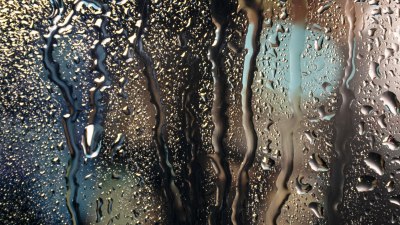Why the Horizon Looks Like a Bad Photoshop on Hot Days
Explore the science behind horizon distortion on hot days and its Photoshop-like effects.

This image was created with the assistance of Freepik
On hot days, you may have noticed an optical phenomenon where the horizon appears to be distorted, resembling a poorly executed Photoshop effect. This intriguing observation can be attributed to several atmospheric phenomena that occur due to temperature differences between the ground and the air. In this article, we will delve into the science behind this visual anomaly, exploring the mechanisms that lead to the 'heat haze' effect, the role of atmospheric refraction, and the impact of environmental factors, all of which contribute to the peculiar appearance of the horizon on scorching days.
Understanding Heat Haze
One of the primary reasons for the strange appearance of the horizon on hot days is the occurrence of heat haze. This phenomenon arises when hot air sits above cooler air, creating a layer of differing densities. The warm air, being less dense, causes light rays to bend as they pass through this gradient, leading to visual distortions. This bending of light, known as refraction, can make distant objects appear wavy or even create mirage-like effects, which can make the horizon seem artificially altered.
The Science of Atmospheric Refraction
Atmospheric refraction plays a critical role in our visual perception of the horizon. As light travels through layers of air, each with different temperatures and densities, it bends according to Snell's law. When light passes from a denser medium (cool air) into a less dense medium (warm air), it bends away from the normal line of incidence. This bending causes objects to appear displaced from their actual position and can create illusions of water or shimmering surfaces, reminiscent of digital editing errors in images.
Mirages: More Than Just Optical Illusions
On particularly hot days, you might even see mirages—an optical illusion where distant objects appear to be reflected in water. Although mirages are a common phenomenon in deserts or on roadways, they can also occur over oceans and large lakes. A basic type of mirage, known as an inferior mirage, happens when the ground is hot and heats the air just above it, causing light rays to refract and create the illusion of a shiny surface. The intensity and occurrence of mirages can fluctuate depending on humidity, temperature, and air pressure, enhancing the surreal quality of the horizon that can make it look ‘photoshopped’.
The Role of Humidity and Temperature
Humidity and temperature variations play significant roles in the formation of the hazy horizon effect. When the temperature difference between the ground and the air is pronounced, the likelihood of refraction increases. High humidity can exacerbate this effect because water vapor in the air changes the density of the atmosphere, causing more intense light bending. Thus, on exceptionally hot and humid days, the visual distortions at the horizon can become more pronounced, leading to a landscape that appears to wobble or ripple, further contributing to the 'bad Photoshop' effect.
Seasonal and Geographical Variations
The occurrence and severity of this phenomenon can also vary seasonally and geographically. In regions with a hot climate, such as deserts or coastal areas during summer, these effects are more noticeable. Conversely, in temperate or colder climates, the phenomenon may be less pronounced or less frequent. The surrounding landscape can also influence how prominently these effects are perceived; for example, flat terrains, such as prairies or oceans, can provide unbroken views where distortions are easily observed.
Comparing Real vs. Digital Distortion
The dramatic visual differences between the actual distortions caused by atmospheric conditions and those created through digital editing can sometimes be difficult to discern at a glance. Just as filters in image editing software can change the perception of an image, the refraction of light in our atmosphere alters the way we perceive distant objects. These similarities make it easy to liken the horizon’s appearance during a hot day to an image that has been awkwardly edited. Understanding this similarity can open up discussions about how optical illusions affect our everyday experiences and perceptions of reality.
The Impact of Climate Change
As the planet warms, understanding phenomena like heat haze and horizon distortion becomes increasingly relevant. Climate change not only affects overall temperatures but also contributes to more extreme weather patterns and variations in humidity. These changes may lead to more frequent occurrences of heat haze and the associated visual distortions. As human activities continue to drive climate changes, we may see a more significant impact on our atmospheric conditions, further influencing how we perceive our surroundings on hot days.
The appearance of the horizon resembling a bad Photoshop job on hot days is a captivating illustration of how temperature and atmospheric conditions influence our perception of reality. Through understanding the effects of heat haze, atmospheric refraction, and environmental factors, we can gain insight into the interplay between nature and our sensory experiences. This knowledge not only enriches our appreciation of the natural world but also prepares us to recognize the nuances of vision that shape our interactions with our surroundings. A phenomenon once thought to be mere distortion reveals deeper scientific principles at work in our everyday observations, inviting curiosity and exploration into the wonders of the atmosphere.











